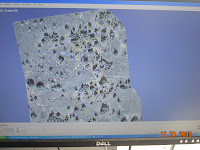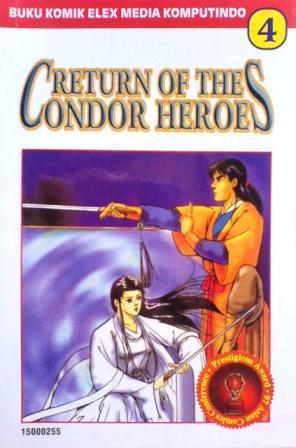Chapter 1: The Outstanding Youngster
It was dawn, foggy, very thick fog.
Ding Peng pushed open the window of his small room. Milky, thick fog drifted in like willow catkins and stroked his face gently.
He had a very delicate face, and a healthy body. When he spoke, he looked vigorous, full of vitality. Yet when he smiled, his face often showed a childish and naïve look, as though he was just a big boy, a kid you had always watched as he grew.
But Ding Peng was no longer a kid.
In the last three months, he had already defeated in a row three famed swordsmen in the Martial World.
Sunshine and water make plants and trees grow bigger and stronger. Victory and success also make a boy mature and grow up.
Now he was not only a true man, but also calm, composed, and full of confidence.
He was born in March, and turned twenty this year. It was right on his birthday when he defeated the renowned swordsman Shi Ding of the Baoding City, using a move called “Shooting Star Beyond Skies.” Shi Ding was a sword master of the Northern Style Green Duckweed Sword Art. He used this victory as a birthday present for himself.
In April, he defeated “Wind-Chasing Sword” Ge Qi with the same move “Shooting Star Beyond Skies.” Ge Qi was the head apprentice of the Huashan Sword School. His sword art style was especially speedy and peculiar, and contained many ruthless moves.
Ge Qi was a very proud swordsman, but after that fight, he admitted his defeat sincerely. He actually acknowledged publicly, “Even if I train for another ten years, I would still have no way of fending off that sword move of his.”
In May, the Head Master of the Iron Sword Clan, “Songyang Swordsman” Guo Zhengping, also lost to his sword move “Shooting Star Beyond Skies.”
Guo Zhengping’s comment for this sword move and for him was, “The sword move rises above the mundane world, leaving absolutely no trace behind. Within one year, this young man will shine in the Martial World and have the world under his feet.”
The Iron Sword Clan was not a prominent school, but it had a long history and a reputation of honesty and decency. Naturally words from the Head Master of such a Martial Art school carried extra weight.
Every time when Ding Peng remembered that comment, he couldn’t help but feeling a great surge of excitement and thrill.
“Shine in the Martial World, and have the world under his feet!”
He had trained very hard in the past thirteen years, fourteen hours every single day, so hard that both his palms and soles bled many times from excessive rubbing.
Especially during those coldest, bitter nights of the winter, to maintain an upbeat spirit, he always held a snowball in his hand. If he saw any sign of sluggishness in himself, he would shove the snowball into his pants, a kind of experience not easily imaginable by others.
The reason why he tortured himself like that was because he was determined to excel and succeed, to earn respect for his father who accomplished nothing in his entire life.
His father was a nameless escort, and accidently got hold of an incomplete page of a sword art manuscript.
The entire sword art only contained one page. And on that one page, there was only one move, “Shooting Star Beyond Skies.”
A shooting star flying by from beyond skies and suddenly disappears. The instant of shine and swiftness are simply unstoppable. But his father was already too old with declined intellect and sluggish response. He could no longer master such speedy sword art. So he passed the page of sword art manuscript to his son.
The last words he left his son at his death bed were, “You must master this sword move. You must earn respect for your father so everyone knows that I have a son who has the world under his feet.”
Every time when Ding Peng thought of his father’s words, his blood would boil and he couldn’t hold his tears back.
But now he decided to never shed another drop of tear. Tears are for the weak. A true man only shed blood!
He took a deep breath of the early morning’s fresh air and drew his sword from under his pillow. Today he would once again fight for another victory using this same sword move.
If he wins today, it would be a real success.
Though Shi Ding, Ge Qi, and Guo Zhengping were also famed swordsmen in the Martial World, the three previous victories would be no match for today’s battle.
Because his rival today is Liu Ruosong.
A member of the “Three Friends of Winter[1]”, the world-renowned “Pine Swordsman”, Liu Ruosong; the owner of the “Ten-Thousand Pines Villa”, Liu Ruosong; the only layman apprentice of the prominent Priest Tianyi of the Xuanzhen Taoist Temple on Mount Wudang, Liu Ruosong.
Many years ago had he heard of this name. At that stage of his life, this name had been as grave as Mount Taishan[2], majestic, lofty, and untouchable. But that was no longer the case. Now he was confident that he could defeat this man. He followed the most appropriate manner when he sent in his invitation, requesting an opportunity to learn swordsmanship from an eminent senior sword master, to make sure Liu Ruosong could not refuse the fight, because he must defeat this man in order to advance and join the class of true Kung Fu masters in the Martial World. Both the time and place of the challenge were set by Liu Ruosong – June 15th, noon, at the Ten-Thousand Pines Villa.
Today is June 15th.
The fight today will shape his fortune for the rest of his life.
The clothes he had washed, straightened, and put up on bamboo poles by the window last night were almost dry now.
Although they were not completely dry, they would soon be once he put them on.
This was the only set of clothes he owned, hand-sewed by his old and sick mother right before his departure. It had been washed pale by now and had many frays. But as long as it was washed clean, he found no shame wearing it.
Poverty is not shameful; Laziness and dirtiness are.
He put on the clothes, and then retrieved from underneath the pillow a money bag also made of blue cloth.
There was only a small knob of silver inside.
This was his entire asset. After paying for the small inn room, there would probably be only a few dozens of copper pennies left.
Normally he slept at places that required no rent. Under the sacrifice altar in the shrine or on the small meadow inside the woods could all be his bed.
For the fight today, he gritted his teeth and booked a room at the small inn, because he needed plenty of sleep to make sure he had plenty of mental and physical strength to win the fight.
After taking care of the inn bill, he made the harsh choice of spending the rest of the money on half pound of halogen beef, ten pieces of dry bean curd, a big bag of peanuts, and five big steamed buns.
For him, this was not only extreme luxury, but also unforgivable waste. Usually he could easily get by a day with only three hard bread cakes.
But he decided to forgive himself today. Today he needed strength, and strength only comes with quality food.
Besides, things could be completely different after today.
Fame can bring not only glory and self-esteem, but also many things one would never dream of. Wealth and social status will also follow along.
He knew that very well, hence he always gritted his teeth to endure poverty and hunger.
He never let himself be tarnished by any indecency, for he was determined to rise up through the right way.
Since it was still four hours from noon, he decided to find a good spot to enjoy the wonderful food.
Somewhere by the foothills near the “Ten-Thousand Pines Villa”, he successfully found a spot that had a spring, a good size patch of grass, beautiful flowers and a nice view. The place was surrounded by flowery trees. The cloudless sky radiated with a beautiful shape of blue.
By then the thick fog had all cleared. The sun had just barely risen. Morning dews glittered on top of dark green leaves like beautiful pearls.
Ding Peng sat down on the soft grass and tore off a piece of beef. The beef tasted even better than what he had imagined.
He was extremely delighted.
Just at that moment, a girl ran into his secret little world like a little antelope chased by a hunter.
The girl was completely naked.
[1] “Three Friends of Winter” was created by Song Dynasty Poet Su Shi and refers to Pine, Bamboo, and Calyx canthus in Chinese culture because all three of them remain beautiful despite the severe cold of the winter. Here it is the name of a small trio of Kung Fu Masters whose nicknames contain these three things. The last character in Liu Ruosong’s name, “song”, also means pine.
[2] Mount Taishan is a famous mountain in Shandong Province, China. It is the first of the “Five Mountains” and is known for its majesty.
Now support the translator Lanny by following my blog and leaving comments! :)
Do not pretend to be something you are not, and I am not a plumber!






























































































































































